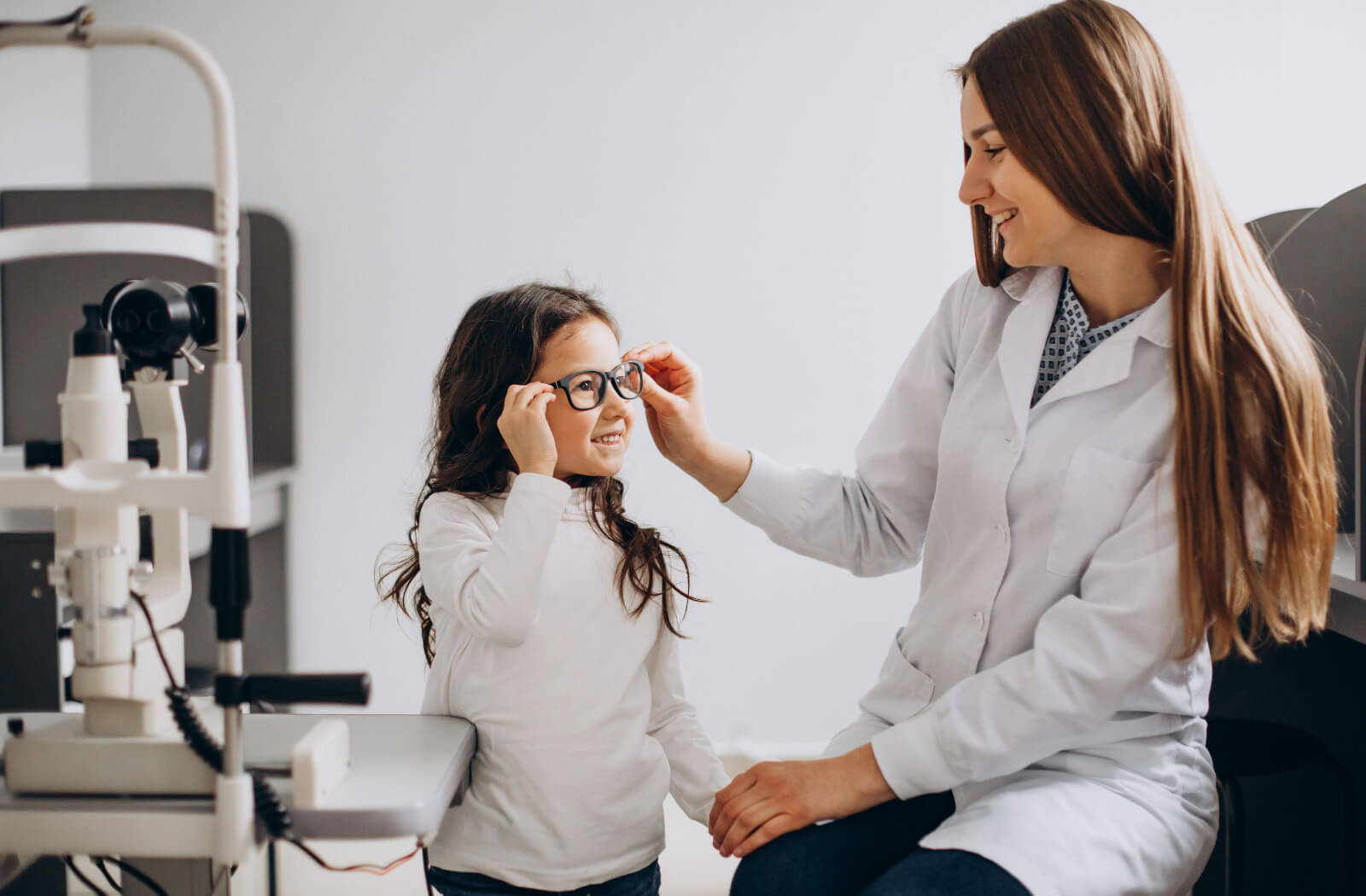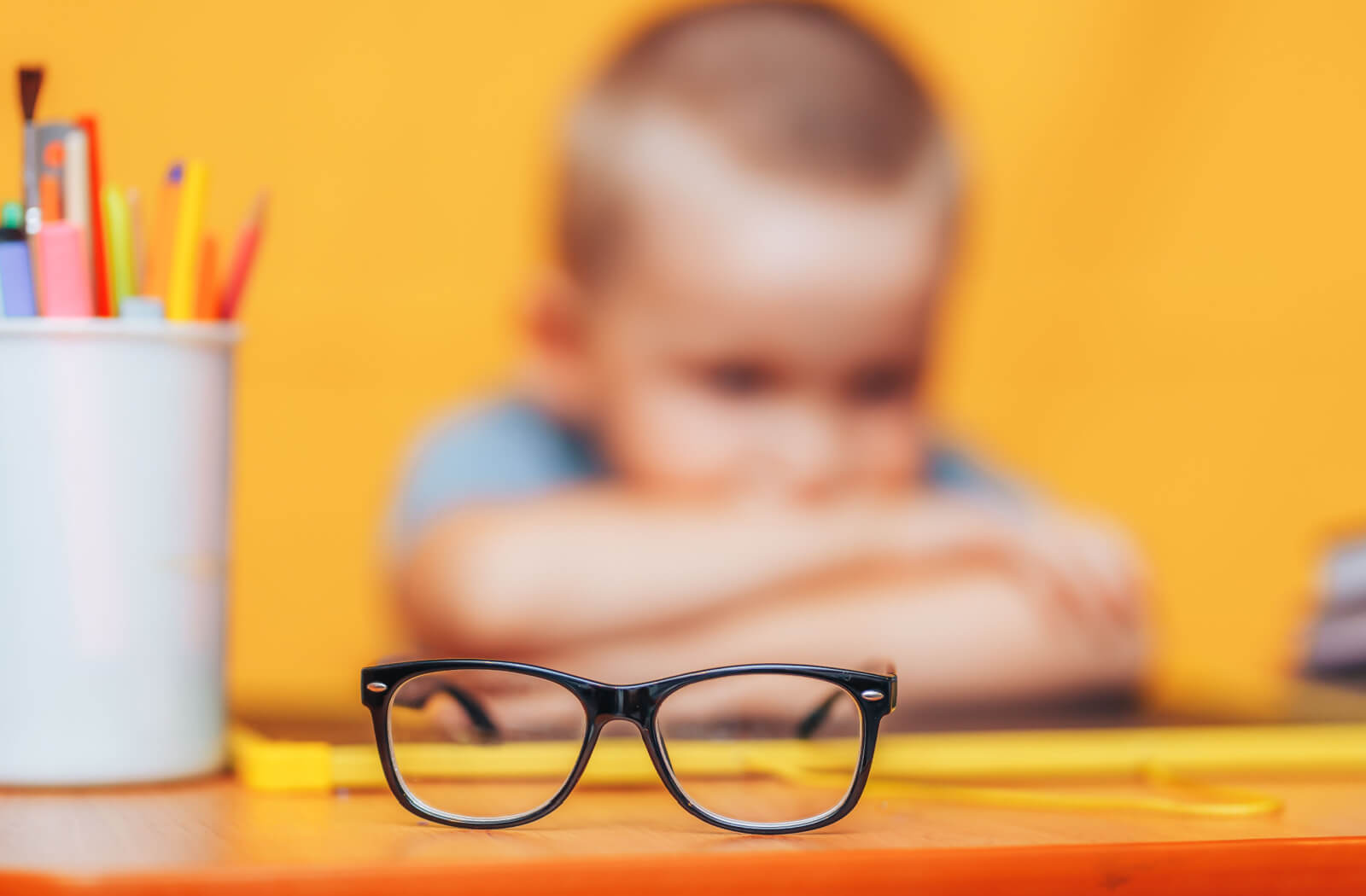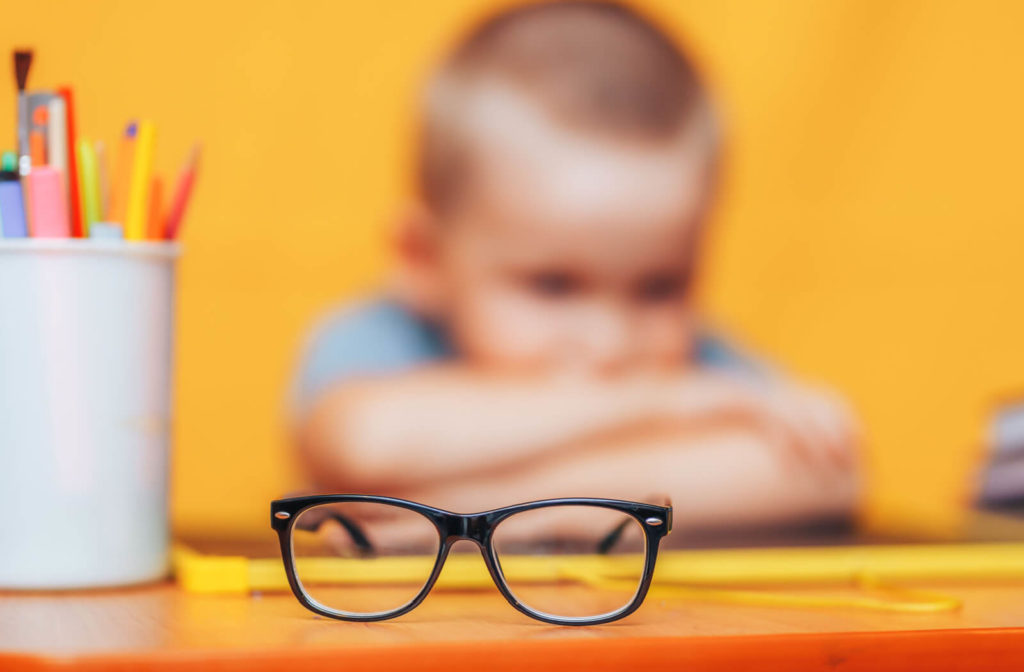Myopia, also known as nearsightedness, is a common vision problem that often develops during childhood. Unfortunately, once someone develops myopia, they cannot reverse it. There are ways to control myopia in children to prevent vision problems in the future. Your child’s eye doctor can help.
Children’s eye exams play a crucial role in detecting and treating myopia. But that’s not all they’re good for. During an eye exam, your child’s eye doctor can check for other eye conditions, like farsightedness or astigmatism.
Plus, they can check your child’s overall eye health. After all, we only get one set of eyes, so regular visits to the eye doctor should begin early in life.
WHAT IS MYOPIA?
Myopia is a refractive error that causes distant objects to appear blurred while close-up objects remain clear. It occurs when the eye grows too long or the cornea’s curvature is too steep. As a result, light entering the eye focuses in front of the retina instead of directly on it.
Myopia usually starts in childhood, typically between ages 6 and 12. You can fix it with glasses, contacts, or laser surgery. However, if left untreated, it can cause serious eye problems in the future.
About 30% of Canadians have myopia, and it is predicted that half of the world’s population will have it by 2050.
What Causes Myopia?
A few contributing factors can contribute to myopia development. Genetics is important, but things like reading, using computers, and not being outside enough can also affect how it develops.
What Are the Symptoms of Myopia?
The primary symptom of myopia is blurry distance vision. Other symptoms include:
- Squinting
- Frequent headaches
- Eye strain
- Eye fatigued
Children with myopia may think their vision is normal and not complain about their vision problems. Some child-specific symptoms may include:
- Poor school performance
- Short attention span (nearsightedness has been misdiagnosed as ADHD)
- Holding things closer to their face than usual
- Squinting and rubbing their eyes
What Are the Risks of Myopia?
There’s no safe level of myopia, and it can contribute to vision-threatening eye conditions, including:
- Retinal detachment
- Cataracts
- Glaucoma
- Macular degeneration
Myopia, also known as nearsightedness, is a common vision problem that often develops during childhood. Unfortunately, once myopia is present, it cannot be reversed. Several effective myopia control methods exist that your child’s eye doctor can use to stop or slow its progression and prevent future vision problems.
Children’s eye exams play a crucial role in detecting and treating myopia. But that’s not all they’re good for. During an eye exam, your child’s eye doctor can check for other eye conditions, like farsightedness or astigmatism. Plus, they can check your child’s overall eye health. After all, we only get one set of eyes, so regular visits to the eye doctor should begin early in life.
What Is Myopia?
Myopia is a refractive error that causes distant objects to appear blurred while close-up objects remain clear. It occurs when the eye grows too long or the cornea’s curvature is too steep. As a result, light entering the eye focuses in front of the retina instead of directly on it.
Myopia often begins during childhood, between the ages of 6 and 12. While it can be corrected with eyeglasses, contact lenses, or laser eye surgery, myopia can lead to serious eye complications later in life.
Myopia currently affects approximately 30% of the Canadian population, and it’s expected to affect around 50% of the world’s population by 2050.
What Causes Myopia?
A few contributing factors can contribute to myopia development. Genetics plays a significant role, but environmental factors, such as reading, using computers, and not spending enough time outdoors, can also contribute to its onset and progression.
What Are the Symptoms of Myopia?
The primary symptom of myopia is blurry distance vision. Other symptoms include:
- Squinting
- Frequent headaches
- Eye strain
- Eye fatigued
Children with myopia may think their vision is normal and not complain about their vision problems. Some child-specific symptoms may include:
- Poor school performance
- Short attention span (nearsightedness has been misdiagnosed as ADHD)
- Holding things closer to their face than usual
- Squinting and rubbing their eyes
What Are the Risks of Myopia?
There’s no safe level of myopia, and it can contribute to vision-threatening eye conditions, including:
- Retinal detachment
- Cataracts
- Glaucoma
- Macular degeneration

MYOPIA CONTROL METHODS
Slowing myopia can help support good eye health and reduce the risk of associated complications. Slowing down myopia in childhood is important because the eyes are still developing and more responsive to treatment. As kids grow, their eyes change a lot, and this is when nearsightedness tends to get worse quickly.
By starting early, strategies can help slow down myopia and reduce the risk of severe nearsightedness in adulthood.
Various methods for managing myopia progression are available, including atropine eye drops, specialty contact lenses and eyeglasses, and orthokeratology.
Atropine Eye Drops
Atropine at concentrations between 0.01% and 0.05% has few side effects in children aged 4 to 12 when treatment starts. A three-year study found that lower concentrations were safe, well tolerated, and had few side effects.
The effectiveness of low-dose atropine varies between 30 and 50%, depending on the concentration.
Eyeglasses & Contact Lenses
Executive bifocal lenses can provide moderate myopia control. But more advanced lens technologies, now specifically designed for myopia control, show better results.
As an alternative to eyeglasses, specialty contacts are also available and effective at slowing myopia:
MiSight 1-day contact lenses currently have the most supporting data.
Orthokeratology
Orthokeratology (ortho-k) uses custom-made gas-permeable lenses that your child wears overnight. These lenses gently reshape the cornea and can reduce the need for glasses or contacts during the day. Ortho-k is also around 50% effective in controlling myopia.
CAN MYOPIA BE PREVENTED?
You can’t prevent myopia. To prevent myopia in your child, ensure they spend time outdoors in natural light. Limit their screen time and close work. Encourage them to take breaks when using their eyes for extended periods.
Eye exams are also essential for staying ahead of myopia and other changes in the eyes. Eye exams can’t stop eye problems, but they can find issues early and use treatments to protect your child’s vision.
Contact us at Insight Eyecare today to book an exam for you or your child. We offer comprehensive eye exams and personalized treatment plans to keep your whole family’s vision healthy and strong.






